Author Archives: Ajitesh Kumar
15 Tricky DevOps Architect Interview Questions & Answers
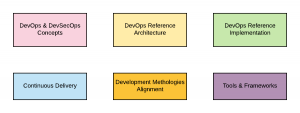
DevOps and DevSecOps are two sides of the same coin. They both share some goals, but they also have their differences. It is important to understand what each one means so that you can implement them properly in your organization. In this post, you will learn about some of the questions (and answers) which could be asked in the DevOps Architect interview. The following are some of the topics you might want to cover for doing interview preparation for DevOps Architect position: DevOps & DevSecOps concepts Setting up DevOps implementation DevOps reference architecture DevOps reference implementation Continuous delivery concepts & reference architecture Technologies (Tools s& Frameworks) Here is a related …
Normal Distributions Questions and Answers for Interviews
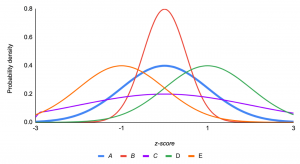
In order to be successful in normal distribution interviews, you need a solid understanding of the normal distribution. This blog post will focus on normal distribution questions and answers that are commonly asked in the data science and statistics interviews. Before jumping into questions and answers, lets quickly understand what normal distribution is. What is normal distribution? A normal distribution is a symmetric, bell-shaped curve that describes the distribution of many types of data. The normal distribution has two parameters, mean and standard deviation. It is important to know these two parameters because they are used to calculate probabilities associated with the normal distribution. The normal curve describes how data …
Level of Significance & Hypothesis Testing
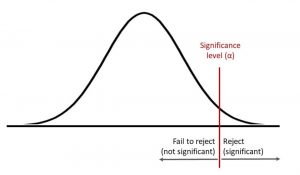
In hypothesis testing, the level of significance is a measure of how confident you can be about rejecting the null hypothesis. This blog post will explore what hypothesis testing is and why understanding significance levels are important for your data science projects. In addition, you will also get to test your knowledge of level of significance towards the end of the blog with the help of quiz. These questions can help you test your understanding and prepare for data science / statistics interviews. Before we look into what level of significance is, let’s quickly understand what is hypothesis testing. What is Hypothesis testing and how is it related to significance …
P-Value & Hypothesis Testing: Examples
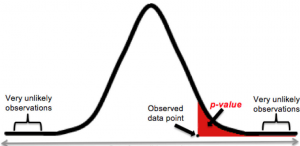
Many describe p-value as the probability that the null hypothesis holds good. That is an incorrect definition. The concept of p-value is understood differently by different people and is considered as one of the most used & abused concepts in statistics, mostly in relation to hypothesis testing. In this blog post, you will learn the P-VALUE concepts with multiple different examples. It is extremely important to get a good understanding of P-value if you are starting to learn data science/machine learning as the concepts of P-value are key to hypothesis testing. Before getting into the description of p-value, let’s quickly go through the hypothesis testing concepts to get a good …
Type I & Type II Errors in Hypothesis Testing: Examples

This article describes Type I and Type II errors made due to incorrect evaluation of the outcome of hypothesis testing, based on a couple of examples such as the person comitting a crime, the house on fire, and Covid-19. You may want to note that it is key to understand type I and type II errors as these concepts will show up when we are evaluating a hypothesis such as those related to machine learning algorithms (linear regression, logistic regression, etc). For example, in the case of linear regression models, the significance value is compared with the p-value and, the null hypothesis that the parameter/coefficient is equal to zero is …
E-commerce Machine Learning Use Cases: Examples

In e-commerce, machine learning can be used to improve a number of decisions thereby resulting in creating a positive business impact. Not only does it help e-commerce organizations increase conversion rates and find the best deals for their customers, but it also helps them understand the customer better. This blog post will look at various different use cases where AI/machine learning and deep learning have been used in eCommerce. What are some key machine learning use cases in eCommerce? Here are some key areas in eCommerce where AI/machine learning can be leveraged: Product recommendation: One of the key use cases where machine learning has been used is to provide product …
Cybersecurity Machine Learning Use Cases: Examples

Cybersecurity professionals are increasingly finding cybersecurity machine learning use cases in their work. The reason for this is that cybersecurity has become more complicated and the scale of cybersecurity threats is growing exponentially. Machine learning can help to combat these cybersecurity threats by providing security teams with real-time alerts, but there are many cybersecurity machine learning use cases beyond just cybersecurity. Artificial intelligence (AI) technologies, in particular, machine learning models such as logistic regression, SVM and random forest, etc., and deep neural networks models such as CNN, LSTM, etc., have been widely used to fight against cyberattacks. In this blog post, we will look into how machine learning is being …
Python – Matplotlib Pyplot Plot Example
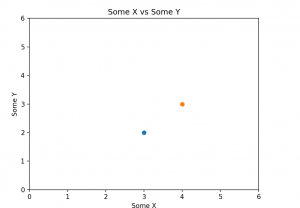
Matplotlib is a matlab-like plotting library for python. It can create both 2D and 3D plots, with the help of matplotlib pyplot. Matplotlib can be used in interactive environments such as IPython notebook, Matlab, octave, qt-console and wxpython terminal. Matplotlib has a modular architecture with each layer having its own dependencies which makes matplotlib very versatile and allows users to use only those modules they need for their applications. matplotlib provides many hooks that allow developers to customize matplotlib features as they need. Matplotlib architecture has a clear separation between user interface and drawing code which makes it easy to customize or create new interfaces for matplotlib. In this blog …
Survival Analysis Modeling for Customer Churn
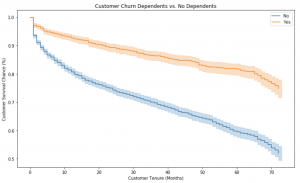
Customer churn is a prevalent problem for many businesses. It can happen in several different ways, such as when customers stop using the product, or when they leave because of an issue with customer service. This blog post will explore survival analysis modeling and what it can do to help you better understand customer churn problems. First, we will discuss survival analysis itself and why it is beneficial for analyzing customer behavior. Then we will show some examples on how survival analysis has been used to analyze customer churn problems. As data scientists, it will be good to familiarize ourselves with survival analysis, as it is a popular modeling technique …
Elbow Method vs Silhouette Score – Which is Better?
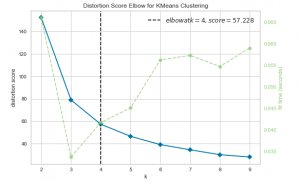
In K-means clustering, elbow method and silhouette analysis or score techniques are used to find the number of clusters in a dataset. The elbow method is used to find the “elbow” point, where adding additional data samples does not change cluster membership much. Silhouette score determines whether there are large gaps between each sample and all other samples within the same cluster or across different clusters. In this post, you will learn about these two different methods to use for finding optimal number of clusters in K-means clustering. Selecting optimal number of clusters is key to applying clustering algorithm to the dataset. As a data scientist, knowing these two techniques to find …
Hello World – Altair Python Install in Jupyter Notebook
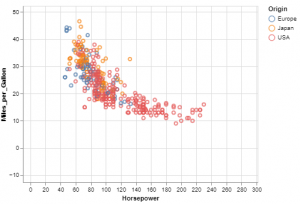
This blog post will walk you through the steps needed to install Altair graphical libraries in Jupyter Notebook. For data scientists, Altair visualization library can prove to very useful. In this blog, we’ll look at how to download and install Altair, as well as some examples of using Altair capabilities for data visualization. What is Altair? Altair is a free statistical visualization library that can be used with python (2 or 3). It provides high-quality interactive graphics via an integrated plotting function ́plot() that produces publication-quality figures in a variety of hardcopy formats and interactive environments across platforms. Altair is also easy to learn, with intuitive commands like ‘plot’, ‘hist’ …
Different types of Machine Learning: Models / Algorithms
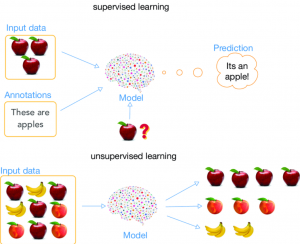
Machine learning is a type of machine intelligence that enables computers to learn and improve without being explicitly programmed. It’s based on the idea that we can build systems which allow our data to do the talking, by finding patterns in vast quantities of information. These machine learning algorithms require different types of machine-learning models trained using different algorithms, depending on what problem they are trying to solve or how accurate an answer needs to be. In this blog post, we will discuss the following four different types of machine learning models / algorithms: Supervised learning Unsupervised learning Semi-supervised learning Reinforcement learning What is supervised learning? Supervised learning is defined …
Google Cloud Automl: Business Application Examples
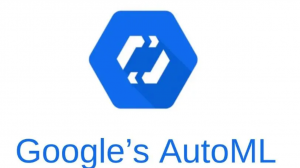
Google cloud platform (GCP) automl services are a set of google cloud platform products with a focus on machine learning and automation. They help you to automate several tasks related to machine learning. In this blog post, we’ll talk about google cloud automl services and some common business problems that can be solved using these GCP automl services. What are some popular Google Cloud Automl services? Google cloud automl services include some of the following: Google Cloud Vision can be used to perform tasks related to image recognition like face detection, OCR (optical character recognition), landmark detection, etc. Google’s cloud vision can detect emotions, understand text, and more. The service …
NIT Warangal offers one-week online training on AI, Machine Learning

Are you interested in learning about AI and Machine Learning, or refresing your concepts? NIT Warangal offers one-week online paid training (minimal fees) on AI, Machine Learning. This program is a great opportunity for students to learn about AI & machine learning basics and advanced concepts. It is organized by the Department of Electronics and Communication Engineering & Department of R&D in association with Center of Continuing Education. It will be taught by experience professors who have years of experience in their respective fields. The course will take place between 30th November to 4th December 2021, and it is open to all Faculty/ Research Scholars/Industry professionals/ and other eligible students …
ML Engineer vs Data Scientist: Differences & Similarities
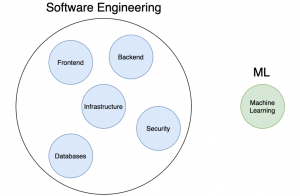
In today’s world, ML (machine learning) engineer and Data scientist are two popular job positions. These positions have a lot of overlap but there are also some key differences to be aware of. In this blog post, we will go over the details of ML engineers vs Data scientists so you can decide which one is right for you! What does an ML engineer do? An ML engineer primarily designs and develops machine learning systems. Before getting into the roles & responsibilities of an ML engineer, let’s understand what is a machine learning system. A machine learning system can be defined as a system that comprises of one or more …
Real-World Applications of Convolutional Neural Networks
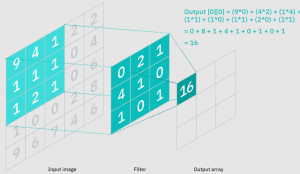
Convolutional neural networks (CNNs) are a type of deep learning algorithm that has been used in a variety of real-world applications. CNNs can be trained to classify images, detect objects in an image, and even predict the next word in a sentence with incredible accuracy. CNNs can also be applied to more complex tasks such as natural language processing (NLP). CNNs are very good at solving classification problems because they’re able to identify patterns within data sets. This blog post will explore some CNN applications and discuss how CNN models can be used to solve real-world problems. Before getting into the details of CNN applications, let’s quickly understand what are …
I found it very helpful. However the differences are not too understandable for me